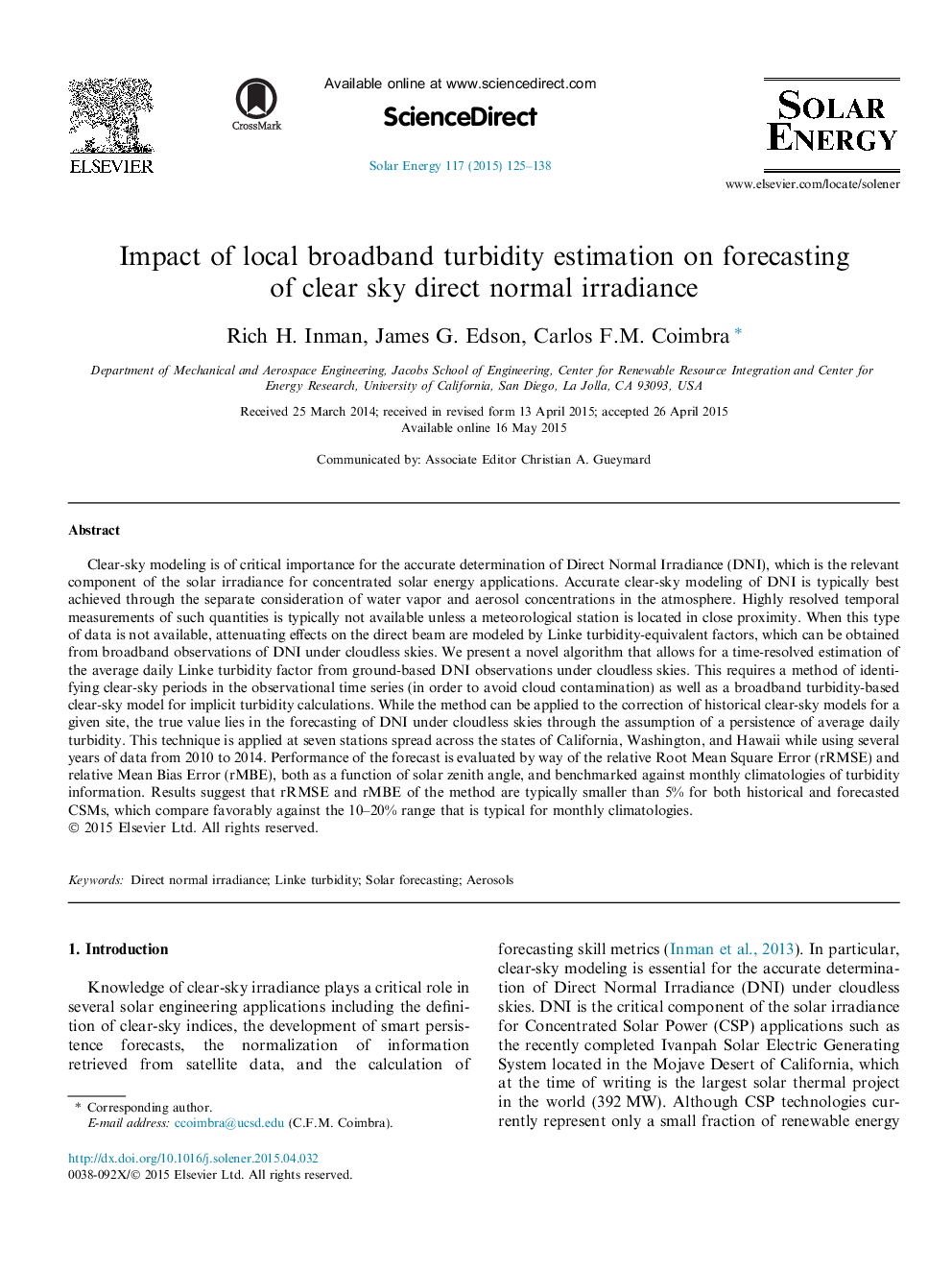| کد مقاله | کد نشریه | سال انتشار | مقاله انگلیسی | نسخه تمام متن |
|---|---|---|---|---|
| 1549689 | 1513101 | 2015 | 14 صفحه PDF | دانلود رایگان |
عنوان انگلیسی مقاله ISI
Impact of local broadband turbidity estimation on forecasting of clear sky direct normal irradiance
ترجمه فارسی عنوان
تاثیر برآورد کثیف پهنای باند محلی بر پیش بینی نور مستقیم نور طبیعی نور مستقیم
دانلود مقاله + سفارش ترجمه
دانلود مقاله ISI انگلیسی
رایگان برای ایرانیان
کلمات کلیدی
تابش نور مستقیم، لکه سمی، پیش بینی خورشیدی، آئروسل ها،
موضوعات مرتبط
مهندسی و علوم پایه
مهندسی انرژی
انرژی های تجدید پذیر، توسعه پایدار و محیط زیست
چکیده انگلیسی
Clear-sky modeling is of critical importance for the accurate determination of Direct Normal Irradiance (DNI), which is the relevant component of the solar irradiance for concentrated solar energy applications. Accurate clear-sky modeling of DNI is typically best achieved through the separate consideration of water vapor and aerosol concentrations in the atmosphere. Highly resolved temporal measurements of such quantities is typically not available unless a meteorological station is located in close proximity. When this type of data is not available, attenuating effects on the direct beam are modeled by Linke turbidity-equivalent factors, which can be obtained from broadband observations of DNI under cloudless skies. We present a novel algorithm that allows for a time-resolved estimation of the average daily Linke turbidity factor from ground-based DNI observations under cloudless skies. This requires a method of identifying clear-sky periods in the observational time series (in order to avoid cloud contamination) as well as a broadband turbidity-based clear-sky model for implicit turbidity calculations. While the method can be applied to the correction of historical clear-sky models for a given site, the true value lies in the forecasting of DNI under cloudless skies through the assumption of a persistence of average daily turbidity. This technique is applied at seven stations spread across the states of California, Washington, and Hawaii while using several years of data from 2010 to 2014. Performance of the forecast is evaluated by way of the relative Root Mean Square Error (rRMSE) and relative Mean Bias Error (rMBE), both as a function of solar zenith angle, and benchmarked against monthly climatologies of turbidity information. Results suggest that rRMSE and rMBE of the method are typically smaller than 5% for both historical and forecasted CSMs, which compare favorably against the 10-20% range that is typical for monthly climatologies.
ناشر
Database: Elsevier - ScienceDirect (ساینس دایرکت)
Journal: Solar Energy - Volume 117, July 2015, Pages 125-138
Journal: Solar Energy - Volume 117, July 2015, Pages 125-138
نویسندگان
Rich H. Inman, James G. Edson, Carlos F.M. Coimbra,
